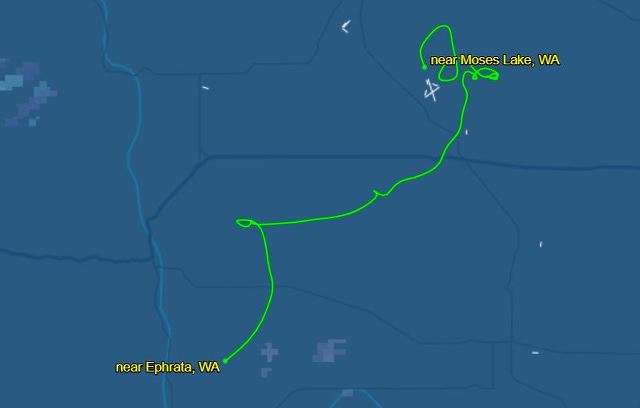Question: How long was you flight - more that 30 minutes or more that one hour; and why the need to fly between 7000-10000 feet? Can I land and do my taxi and ground operations at a Class G airspace airport?
Looks like it was just over an hour. And, it turns out I took off from my home drome (D), flew all the maneuvers, and then went and landed at a C:


The 7-10,000 feet thing comes from Table 5 on page 44 of the AC.
Did you need to do a landing to a full stop? and then take off again?
No. Took off from the D, full stop landing at the C.
So where is all the info about the proving flight "must be in rule airspace" coming from?
Well, it's not only in the AOPA lit, it's also right there on the main ADS-B rebate page... Twice:
https://www.faa.gov/nextgen/equipadsb/rebate/
Here's my theory: I think that they may have said what the AC says at some point, but then had a bunch of people who flew around in areas where there was either no, or spotty, ADS-B coverage from the FAA's ground network, so the test failed. Those people complained loudly, the rebate people got sick of hearing it, and so they put up the warnings about "rule airspace" to ensure that they'd have coverage where people were flying the tests.
IE, they're trying to make it idiot-proof... But I bet if you follow the AC to the letter it'll work just fine.
I just got my Skybeacon signed off and have to do the proving flight this month for my rebate. I am about 50 miles from a Mode C veil, 50 miles from a Class C, and about 20 minutes straight down from 10,000' in my 150. If I don't have to do all 30 minutes of flight above 10,000, that would save some gas, but it would also suck to do the flight and not have it count because I was not in "rule airspace".
It looks like you're in the Northeast. It's heavily populated out there, and I'm sure the ADS-B coverage is excellent. The AC specifies between 7000-10,000 AGL for the cruise tests. I looked at my track log, I did everything at 8000 MSL (which is *just* over 7000 AGL). I'm sure if you did the "cruise" portions at 7,000 AGL (7500 MSL out where you are?) that would be fine. And you don't have to spend 30 minutes up there, just in ADS-B coverage. I would start your flight by climbing to where your equipment (whatever it is) consistently is indicating that you have ADS-B coverage, and then start with the straight-ahead climb, do the climbing turns at 3000-5000 AGL, etc down the list of maneuvers I posted above.
I guess I also question going Vne-10, seems cutting it a bit close for my taste - got to have a perfect smooth day to even try that. How often have you ever taken your planes to that close to Vne? I did have an instructor that gave me an unusual attitude under the hood in my pre-checkride checkout that got about that fast, but it is the only time I want to be that close to the "wings may rip off" speed.
I've had my plane bumping right up against the underside of the red line... But, Vne doesn't mean your wings are going to rip off. I think if you *exceed* Vne, most likely the first adverse thing that will happen is control surface flutter... But that's just a guess. You do need smooth air to go that fast, but it doesn't have to be glass-smooth, just not "turbulent".
I see that your 150 has a pretty large yellow arc. My M20R's yellow arc is only 29 knots, but it seems the 150's is 34 knots and thus a much higher percentage of the allowable airspeeds. I'm also sure that you would have to darn near point the nose at the ground (at least it would seem that way from the cockpit) to get the 150 going 131 knots for a full minute at cruise power.
So, going back to the fact that their system is going to be looking for certain things, and given what I've read in the AC, I would expect that if you leave cruise power in and push over into a 1000-fpm descent for at least a minute, that you'll trip whatever trigger they're looking for. I would guess that they're looking for a definite initiation of the descent and a corresponding increase in speed.
Anyone find a link to something from the FAA that states the flight must be in rule airspace? I did a search and could not find anything else about the proving flight other than that AC listed above and it certainly makes no mention about rule airspace.
I posted a link above in this post with the FAA saying it twice on the rebate page, along with my theory as to why they say it and why I've been successful at my test flights without flying them in rule airspace.




